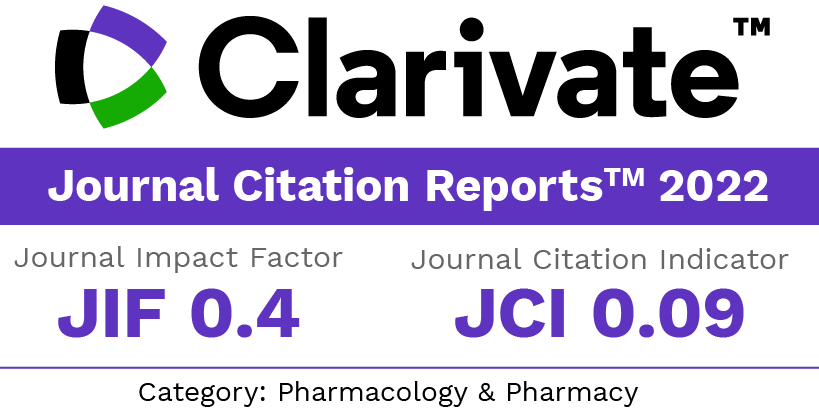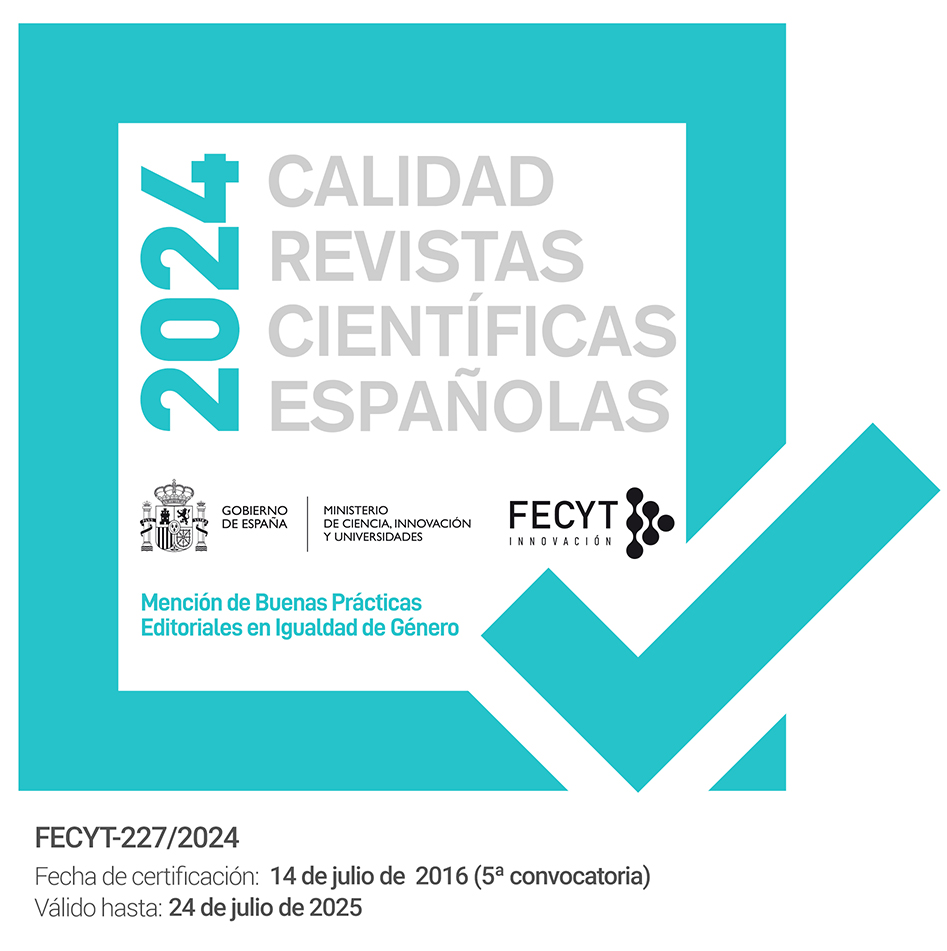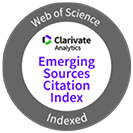Antibiotic resistant bacteria in surface waters of the pampeana region, Argentina
DOI:
https://doi.org/10.30827/ars.v66i2.31883Keywords:
Resistant bacteria, beta-lactams, surface waters, intensive livestock farmingAbstract
Introduction:Antibiotics are widely used in human and veterinary medicine for the therapeutic treatment of infectious diseases. They can reach the aquatic environment after being used in animal husbandry as growth promoters and for therapeutic purposes. In this work, the presence of antibiotic-resistant bacteria in the natural canal system that connects a feedlot in the Pampa Ondulada with the Arroyo Burgos, in the Province of Buenos Aires, was evaluated.
Method: The prevalence of Gram-negative bacilli resistant to veterinary and human antibiotics was determined. The antibiotic sensitivity of selected Gram-negative bacteria was evaluated by the disk diffusion method. Bacterial isolates resistant to ceftazidime or cefotaxime were designated as suspected ESBL producers. Potential ESBL-producing isolates were confirmed by the disk diffusion method with clavulanic acid.
Results: Among the isolated strains we find: Escherichia coli, Enterobacter cloacae, Pseudomonas fluorescens, Cedecea davisae and Pseudomonas oryzihabitans. In the resistance profile we can observe high resistance to third-generation cephalosporins for clinical use such as ceftazidime and cefotaxime. According to phenotypic assays, 60% of ceftazidime-resistant strains are ESBL producers.
Conclusions: Diffuse contamination with bacteria resistant to beta-lactam antibiotics for both veterinary and clinical use could be determined. These results represent a problem for public health.
Downloads
References
Vanegas Múnera J, Jiménez Quiceno J. Resistencia antimicrobiana en el siglo xxi: ¿hacia una era postantibiótica? RevFacNac Salud Pública. 2019; 38(1):1-6.
Marti E, Variatza E, Balcazar JL. The role of aquatic ecosystems as reservoirs of antibiotic resistance. Trends Microbiol. 2014; 22 (1): 36-41. doi: 10.1016/j.tim.2013.11.001.
Liu X, Lu S, Guo W, Xi B, Wang W. Antibiotics in the aquatic environments: A review of lakes, China. Science of the Total Environment. 2018; 627: 1195-1208. Doi: 10.1016/j.scitotenv.2018.01.271
Qiao M, Ying GG, Singer AC, Zhu YG. Review of antibiotic resistance in China and its environment. Environ. Int. 2018; 110: 160-172. Doi: 10.1016/j.envint.2017.10.016.
Danner MC, Robertson A, Behrends V, Reiss J.Antibiotic pollution in surface fresh waters: Occurrence and effects. Science of the Total Environment. 2019; 664: 793-804. Doi: 10.1016/j.scitotenv.2019.01.406.
Polianciuc SI, Gurzău AE, Kiss B, Georgia Ștefan M, Loghin F. Antibiotics in the environment: causes and consequences. Med Pharm Reports. 2020; 93(3):231-240.
Vaz-Moreira I, Nunes OC, Manaia CM. Bacterial diversity and antibiotic resistance in water habitats: searching the links with the human microbiome. FEMS Microbiol Rev. 2014;38(4):761-778. Doi: 10.1111/1574-6976.12062.
Wall BA, Mateus AL P, Marshall L, Pfeiffer DU, Lubroth J, Ormel HJ. et al. Drivers, Dynamics and Epidemiology of Antimicrobial Resistance in Animal Production. FAO 2016. Roma Italia.
Agga GE, Arthur TM, Durso LM, Harhay DM, Schmidt JW. Antimicrobial-Resistant Bacterial Populations and Antimicrobial Resistance Genes Obtained from Environments Impacted by Livestock and Municipal Waste. PLoS ONE. 2015;10(7): e0132586. Doi: 10.1371/journal.pone.0132586.
Hernandes F, Henriques L, Pilz R, et al. Antibiotic resistance in aquatic environments of Rio de Janeiro, Brazil. In: Ahmad I, Ahmad Dar M, editors. Perspectives in water pollution. Croatia: InTech; 2013. Doi:10.5772/54638
Hanna N, Tamhankar AJ, Stålsby Lundborg C. Antibiotic concentrations and antibiotic resistance in aquatic environments of the WHO Western Pacific and South-East Asia regions: a systematic review and probabilistic environmental hazard assessment. Lancet Planet Health.2023;7: e45-54.
Scott HM, Acuff G, Bergeron G, Bourassa MW, Simjee S, Singer RS. Antimicrobial resistance in a One Health context: exploring complexities, seeking solutions, and communicating risks. Ann N Y Acad Sci. 2019; 1441(1):3-7. Doi: 10.1111/nyas.14057.
Bhushan C, Khurana A, Sinha R, Nagaraju M. Antibiotic Resistance in Poultry Environment: Spread of Resistance from Poultry Farm to Agricultural Field. Centre for Science and Environment: 2017 New Delhi, India
Taylor NGH, Verner-Jeffreys DW, Baker-Austin C. Aquatic systems: Maintaining, mixing and mobilizing antimicrobial resistance? Trends Ecol. Evol. 2011; 26: 278-284. Doi: 10.1016/j.tree.2011.03.004.
Cao ST, Tran HP, Le HTT, Bui HPK, Nguyen GTH, Nguyen LT. et al. Impacts of effluent from different livestock farm types (pig, cow, and poultry) on surrounding water quality: a comprehensive assessment using individual parameter evaluation method and water quality indices. Environ Sci Pollut Res Int.2021;(36):50302-50315. Doi: 10.1007/s11356-021-14284-9.
Rodríguez E, Jiménez JN. Resistencia bacteriana a antibióticos en ambientes acuáticos: origen e implicaciones para la salud pública. Rev. Fac. Nac. Salud Pública. 2023; 41(3):e351453. Doi: 10.17533/udea.rfnsp.e351453.
Chagas CI, Santanatoglia OJ, Moretton J, Paz M, Kraemer FB. Surface movement of cattle-borne biological contaminants in the drainage network of a basin of the Rolling Pampas. Ciencia del Suelo. 2010; 28(1):23-31.
Chagas CI, Kraemer FB, Santanatoglia OJ, Paz M, Moretton J. Biological water contamination in some cattle production fields of Argentina subjected to runoff and erosion. Span. J. Agric. Res. 2014; 12(4):1008-1017.
CLSI. Performance Standards for Antimicrobial Susceptibility Testing; Twenty-First Informational Supplement. CLSI document M100-S21, Clinical and Laboratory Standards Institute, Wayne, PA 2019
Gelalcha BD, KerroDego O. Extended-Spectrum Beta-Lactamases Producing Enterobacteriaceae in the USA Dairy Cattle Farms and Implications for Public Health. Antibiotics, 2022;11(10):1313. Doi:10.3390/antibiotics11101313
Kanwar N, Scott HM, Norby B, Loneragan, GH, Vinasco J,Mcgowan M. et al Effects of ceftiofur and chlortetracycline treatment strategies on antimicrobial susceptibility and on tet(A), tet(B), and bla CMY-2 resistance genes among E. coli isolated from the feces of feedlot cattle. PLoS One. 2013; 8: e80575 Doi: 10.1371/journal.pone.0080575.
Schmidt JW, Griffin D, Kuehn LA, Brichta-Harhay DM. Influence of therapeutic ceftiofur treatments of feedlot cattle on fecal and hide prevalences of commensal Escherichia coli resistant to expanded-spectrum cephalosporins, and molecular characterization of resistant isolates. Appl Environ Microbiol.2013; 79: 2273-2283. Doi: 10.1128/AEM.03592-12.
Markland S, Weppelmann TA, Ma Z, Lee S, Mir R, Teng L. et al. High prevalence of cefotaxime resistant bacteria in grazing beef cattle: a cross sectional study. Front Microbiol. 2019; 10:176. Doi: 10.3389/fmicb.2019.00176.
Noyes NR, Yang X, Linke LM, Magnuson RJ, Dettenwanger A, Cook S, et al. Resistome diversity in cattle and the environment decreases during beef production. Elife. 2016; 5:e13195. Doi: 10.7554/elife.13195.
Lee S, Mir RA, Park SH, Kim D, Kim HY, Boughton RK. et al. Prevalence of extended-spectrum β-lactamases in the local farm environment and livestock: challenges to mitigate antimicrobial resistance. Crit Rev Microbiol. 2020;46(1):1-14. Doi: 10.1080/1040841X.2020.1715339.
Leonard AFC, Zhang L, Balfour AJ, Garside R, Gaze WH . Human recreational exposure to antibiotic resistant bacteria in coastal bathing waters. Environ Int. 2015; 82:92-100. Doi: 10.1016/j.envint.2017.11.003.
Leonard AFC, Zhang L, Balfour AJ, Garside R, Hawkey PM, Murray AK. et al. Exposure to and colonisation by antibiotic-resistant E. coli in UK coastal water users: Environmental surveillance, exposure assessment, and epidemiological study (Beach Bum Survey). Environ. Int. 2017; 114:326-333. Doi: 10.1016/j.envint.2017.11.003.
Klous G, Huss A, Heederik DJ, Coutinho RA. Human–livestock contacts and their relationship to transmission of zoonotic pathogens, a systematic review of literature. One Health. 2016; 2:65-76. Doi: 10.1016/j.onehlt.2016.03.001.
Lepper HC, Woolhouse MEJ, Van Bunnik BAD. The Role of theEnvironment in Dynamics of Antibiotic Resistance in Humans and Animals: A Modelling Study. Antibiotics. 2022; 11: 1361. Doi:10.3390/antibiotics11101361
Downloads
Published
How to Cite
Issue
Section
License
Copyright (c) 2025 lidia Nuñez, Carina Tornello, Julián Mantovano, Claudia Molinari, Celio Chagas, Juan Moretton

This work is licensed under a Creative Commons Attribution-NonCommercial-ShareAlike 4.0 International License.
The articles, which are published in this journal, are subject to the following terms in relation to the rights of patrimonial or exploitation:
- The authors will keep their copyright and guarantee to the journal the right of first publication of their work, which will be distributed with a Creative Commons BY-NC-SA 4.0 license that allows third parties to reuse the work whenever its author, quote the original source and do not make commercial use of it.
b. The authors may adopt other non-exclusive licensing agreements for the distribution of the published version of the work (e.g., deposit it in an institutional telematic file or publish it in a monographic volume) provided that the original source of its publication is indicated.
c. Authors are allowed and advised to disseminate their work through the Internet (e.g. in institutional repositories or on their website) before and during the submission process, which can produce interesting exchanges and increase citations of the published work. (See The effect of open access).























